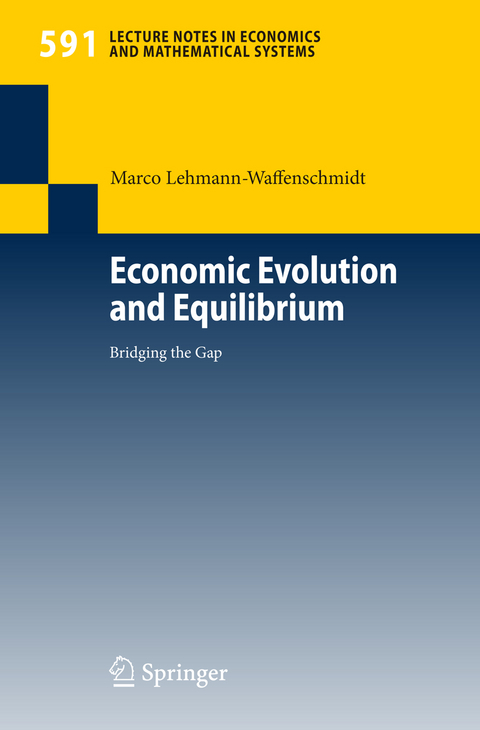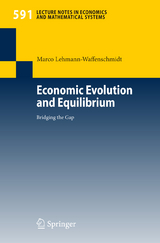Economic Evolution and Equilibrium
Springer Berlin (Verlag)
978-3-540-68662-0 (ISBN)
General Introduction.- General Introduction.- Notations and Mathematical Preliminaries.- Notations and Mathematical Preliminaries.- Conceptualization and Definition of Evolutions of Economies in Four General Equilibrium Frameworks.- to Part I.- Evolutions in the Traditional Walrasian Exchange Equilibrium Framework.- Evolutions in an Exchange Equilibrium Framework Without Walras' Law and Homogeneity.- Evolutions in a General Equilibrium Framework With Production, Taxes, and Subsidies.- Evolutions in the Temporary Fixprice Equilibrium Framework.- Conclusions.- Formal Analysis.- to Part II.- Near-Equilibrium Paths.- Equilibrium Paths.- Economic Refinements of the Notion of an Evolution of Economies.- The Structure of the Equilibrium Price Set of an Evolution of Exchange Economies.- Comparison With Related Results in the Literature.- Conclusions.- Economic Analysis.- to Part III.- Applications of the Analytical Results From Part II in the Economist's Laboratory.- The Method of Kinetic Analysis of Evolving Economies in Historical Time.- Evolving Economies in Historical Time.- Conclusions.- General Conclusions and Outlook.- General Conclusions and Outlook.
| Erscheint lt. Verlag | 7.5.2007 |
|---|---|
| Reihe/Serie | Lecture Notes in Economics and Mathematical Systems |
| Zusatzinfo | VIII, 272 p. 75 illus. |
| Verlagsort | Berlin |
| Sprache | englisch |
| Maße | 155 x 235 mm |
| Gewicht | 431 g |
| Themenwelt | Mathematik / Informatik ► Mathematik ► Angewandte Mathematik |
| Wirtschaft ► Volkswirtschaftslehre ► Mikroökonomie | |
| Schlagworte | Bang-bang policy • Economics • Equilibrium • Evolution • General Equilibrium • Open-loop • Piecemeal policy |
| ISBN-10 | 3-540-68662-2 / 3540686622 |
| ISBN-13 | 978-3-540-68662-0 / 9783540686620 |
| Zustand | Neuware |
| Haben Sie eine Frage zum Produkt? |
aus dem Bereich




